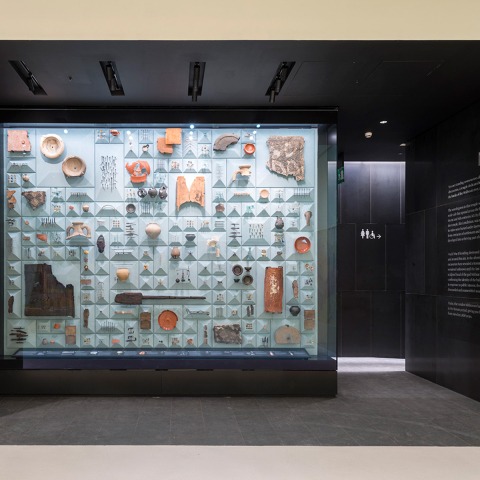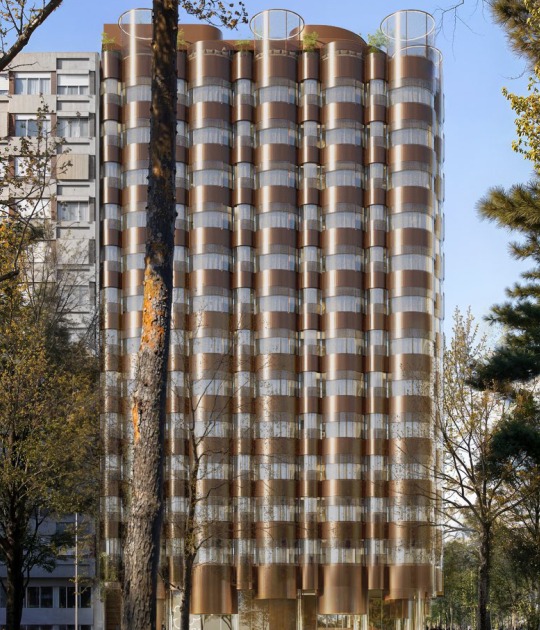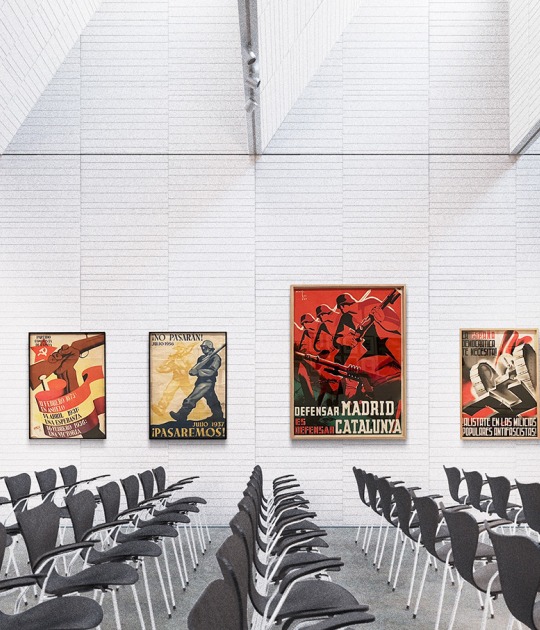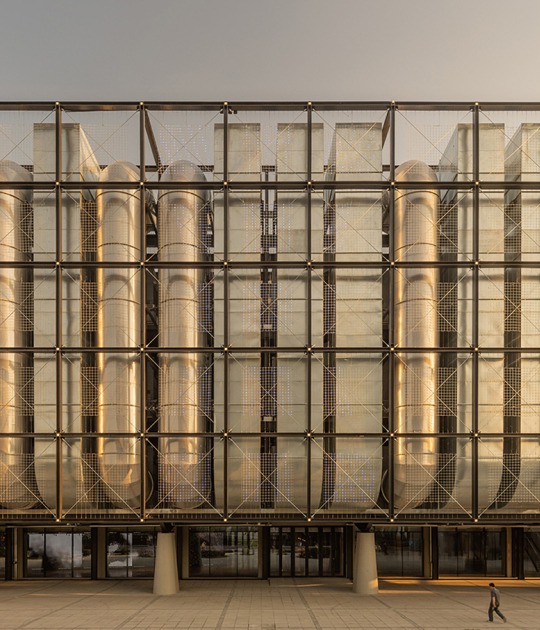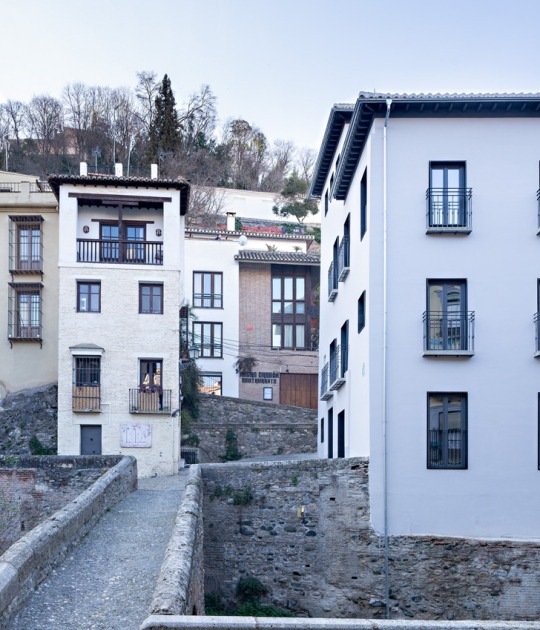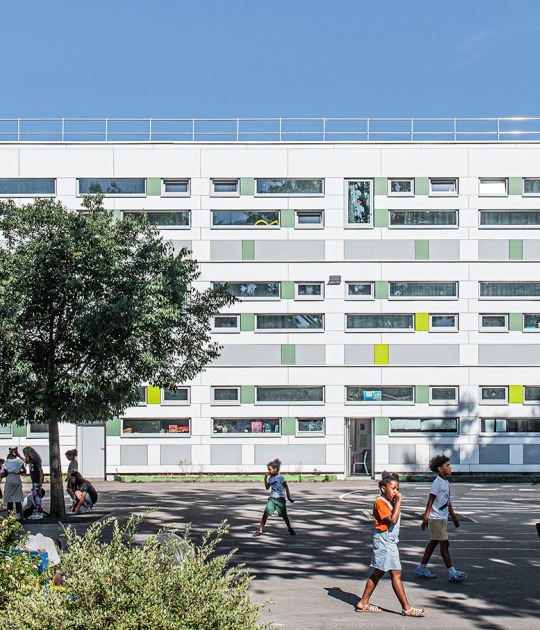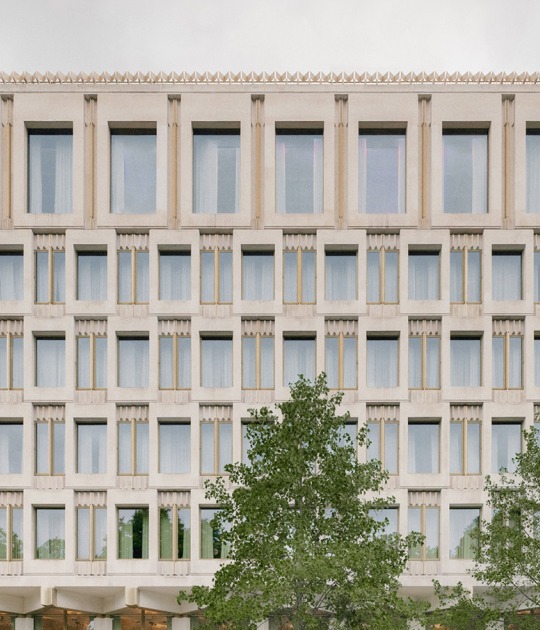With its own, independent entrance along Walbrook, the three-storey space will showcase the reconstructed temple seven metres below the streets of modern London, at Roman ground level. The temple is introduced on a mezzanine, directly above it, by a display of projections and interactive kiosks that invite visitors to explore the practices and symbols associated with the cult of Mithras. At street-level, Bloomberg SPACE will host a series of contemporary art commissions reflecting broadly on the history of the site, as well as a huge vitrine displaying more than 600 remarkable Roman artefacts found during recent excavations at Bloomberg.
The immersive temple reconstruction uses carefully directed lights, haze and sound to bring the temple’s remains to life, and to evoke the rituals and activities that took place within its cave-like walls. The memorable reconstruction marks a new direction for the interpretation and presentation of archaeological ruins.
“London has a long history as a crossroads for culture and business, and we are building on that tradition. As stewards of this ancient site and its artefacts, we have a responsibility to preserve and share its history. And as a company that is centred on communication – of data and information, news and analysis – we are thrilled to be part of a project that has provided so much new information about Roman London. We hope London Mithraeum Bloomberg SPACE will be enjoyed by generations to come,” said Michael R. Bloomberg, Founder, Bloomberg LP.
Bloomberg’s new European headquarters lies over the course of one of London’s lost rivers, the Walbrook. Nearly 2,000 years ago when Londinium was founded by the first Roman Londoners, this river marked the limits of their early settlement. As the town prospered and expanded, the banks of the Walbrook were reclaimed and Roman London became not only a major port of trade but a bustling economic centre in its own right. At its height, it had a population of around 30,000 people contained within the boundary of its city walls. Parts of these walls survive in an area roughly corresponding to the ‘Square Mile’ of the City of London, which remains London’s centre of commerce today.
In the 3rd century AD, nearly 200 years after the founding of Londinium, a Roman Londoner built a temple to the god Mithras next to the Walbrook. The Temple of Mithras, perhaps the most famous Roman discovery in 20th century London, was found by chance in 1954 on a bomb site where the Bloomberg building now stands. The near complete footprint of the temple emerged from the rubble, a symbol of London’s endurance. It immediately became a public sensation, attracting front-page news and queues of up to 30,000 visitors a day over a two week period.
Debate raged in government and the press about what should happen to the ruin. Eventually, it was dismantled and moved to make way for essential rebuilding. In the 1960s, it was roughly and somewhat inaccurately reconstructed 100 metres away from its original location. Bloomberg acquired the site in 2010 and committed to reinstating a more faithful, publicly accessible reconstruction of the temple.
A team of skilled archaeologists, stone masons, conservators and designers have created the reconstruction working from original archaeological drawings, models, photographs, first-hand testimonies and newsreel footage. The project has taken ten years to complete and has been funded and created by Bloomberg, working closely with the City of London and a team of conservation specialists, in consultation with the expert team at MOLA (Museum of London Archaeology). The immersive display within the temple was created by an interdisciplinary team led by internationally-recognised design firm Local Projects.
